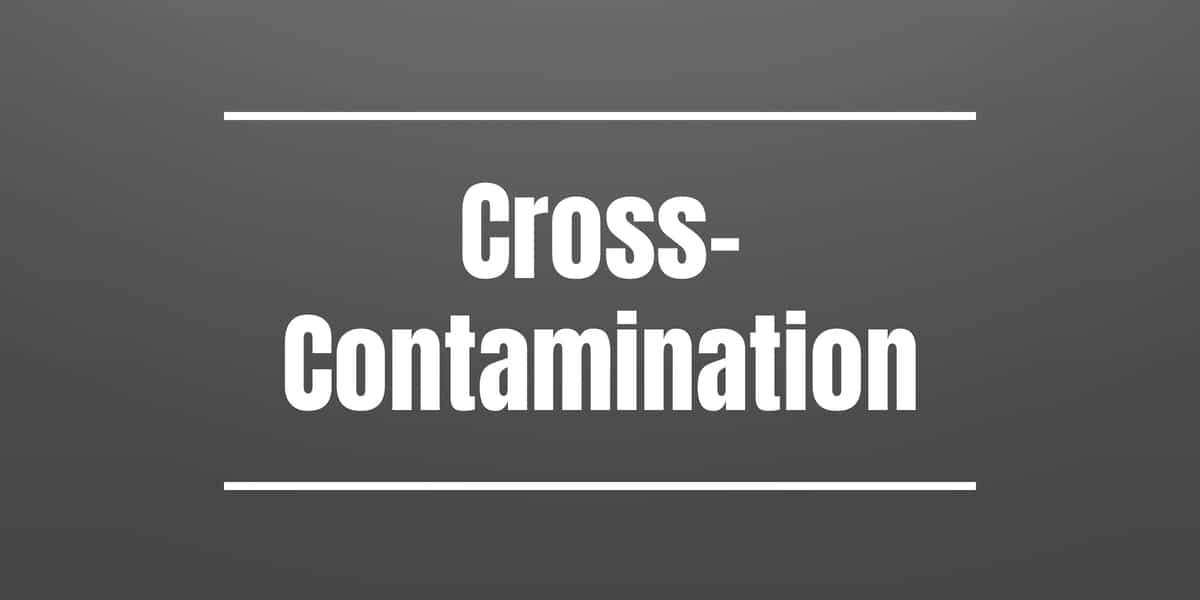Surface cross-contamination is the single most significant cleaning challenge facing custodial teams and facilities managers in any building.

What is Surface Cross-Contamination & Why Does it Matter?
Surface cross-contamination is the transfer of germs and bacteria from one surface to another--commonly caused by:
- Hand-to-Surface Contact - The five-second rule is a myth. The moment a person touches a surface, germs and bacteria are transferred to and from the hand and whatever it contacts, and;
- Surface-to-Surface Contact - The two most common types of surface-to-surface cross-contamination occur during cleaning or spreading germs and other bacteria from the bottoms of our shoes. However, surface-to-surface contact of any kind can spread germs--an issue prevalent in healthcare facilities.
So, why does that matter?
According to Dr. Charles Gerba, professor of environmental microbiology at the University of Arizona;
Eighty percent of all common illnesses are spread by hand to mouth, nose and eye contact.
These illnesses include influenza and the common cold--ailments that cost U.S. businesses $15 Billion in lost-productivity each year.
Additional losses can come in the form of legal fees and lost business, common among restaurants, in the event of a foodborne illness outbreak.
[...] a single outbreak of listeria in fast food and casual style restaurants could cost upwards of $2.5 million in meals lost per illness, lawsuits, legal fees, fines and higher insurance premiums for a 250-person outbreak.
When looking at the same circumstances for fine dining restaurants, $2.6 million in costs were incurred.
The subsequent costs of outbreaks can be major setbacks for restaurants and are sometimes irreversible.
A Foodborne Illness Outbreak Could Cost a Restaurant Millions, Study Suggests
Preventing Cross-Contamination
Preventing cross-contamination is relatively simple if your facility occupants and custodial teams adhere to several basic principles.
- Know where the germ hot spots are - Germ hot spots are everywhere. To get a good idea of how prolific the challenge is, pay attention to each surface you touch during the day. Now, imagine how many other people have touched that same surface.
- Wipe down germ hot spots daily - Cleaning and sanitizing germ hot spots daily will never remove every germ, but it will reduce the number of those germs down to a volume that will be safe for most people.
- Assign color-coded microfiber to specific rooms and surfaces - Assigning specific colors to specific surfaces will help prevent common cross-contamination issues, such as transferring germs from the bathroom floor to the kitchen and dining areas.
- Store cleaning equipment in assigned spaces - All of the cross-contamination prevention procedures in the world won't work if the mop used to clean the bathroom is stored on top of the mop used to clean the breakroom. If separate cleaning closets are impractical, strict storage management will be required. This challenge can be somewhat mitigated by implementing removable mop heads and laundering used microfiber cloths after each use.
- Train and monitor your staff - A recent incident at a Florida restaurant whereby an employee was observed cleaning a dining room table with a mop that had just been used to clean the floor--in the children play area--underscores just how vital it is to monitor and train all staff in safe facility hygiene practices.
- Use better equipment - Microfiber, vacuum scrubbers, and electrostatic-disinfection appliances have been shown in numerous scientific case studies to reduce the measurable levels of germs and bacteria on a scale far superior to their conventional counterparts. While upgrading, training on, and maintaining modern cleaning equipment may seem like an incredible financial investment, consider the amount of money your business loses each year due to preventable workplace illness.
- Clean top to bottom - Cleaning top to bottom avoids knocking high dust and germs down to previously cleaned surfaces. Additionally, where practical, consider assigning a single worker to clean and disinfect a specific room or area to avoid cross-contamination from the shoes of other custodial staff.
References & Resources
- State Investigating Cleaning Method at Fast Food Chain
- Preventing Cross-Contamination Is as Easy as 1, 2, 3
Takeaway
By far and large, surface cross-contamination is a significant challenge that affects everyone, costs U.S. businesses millions of dollars in lost productivity, and millions more in healthcare costs every year, but is almost entirely preventable.
As recent events have demonstrated, cleaning is usually best left in the hands of dedicated staff.
Outsourcing to a service provider with a proven track record of industry success ensures compliance and accountability on the part of highly trained and financially vested professional janitorial staff.
Contact us today and discover why Vanguard Cleaning Systems® is the Standard of Clean® for businesses throughout Northwest Arkansas, Missouri, and Oklahoma.
In Oklahoma, dial 918-960-4450
In Arkansas, dial 479-717-2410
In Missouri, dial 417-812-9777


